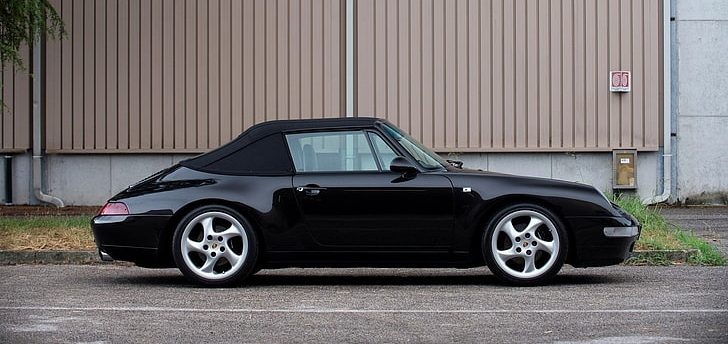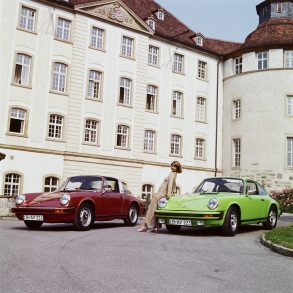(1995 – 1997) Porsche 911 Carrera 4 Cabriolet (993) – Ultimate Guide
2,500 cabriolets were made in the 993 Carrera 4. The 993 Carrera 4, sold between 1995 and 1998, uses the same powerplant as the standard 993 Carrera, but puts power down to all four wheels through a 6-speed manual transmission. A “Carrera 4” badge on the tail, along with silver-painted brake calipers and clear front and side turn signals, help distinguish the all-wheel drive C4 from the C2 sibling.
The 993 initially launched with two models: the rear-wheel-drive Carrera and all-wheel-drive Carrera 4 in both coupe and cabriolet body styles. For the new 993 platform, Porsche heavily revised their four-wheel drive system to include a viscous coupling system that distributed power to the front and rear wheels. This made the model much smoother than the C4 it replaced. Along with the new viscous coupler from Viscodrive, Porsche fitted a rear limited-slip differential and and automatic brake differential which applied braking force to a slipping rear wheel.
The system was vastly better than the 964’s computer controlled unit in that it added only 110 pounds to the weight of the car and had 50% less friction loss. Outward, the Carrera 4 was distinguished by it’s titanium-finished brake calipers, clear front turn signals and rear rear turn signals.
The Carrera 4 was the base all-wheel-drive version of the naturally aspirated 911. It featured two round headlights, in the tradition of the Porsche brand. The flat and low trunk-lid in the front was lower than the fenders. The windshield was not very raked and the sloped back toward the end of the car made a curved line along with the engine lid. The convertible roof was the same as the Carrrera 2 Cabriolet.
The interior featured sport-bucket seats in the front and two small seats in the back. The instrument cluster featured five dials, with the tachometer in the middle and a clock on the right side. The climate controls and the stereo were mounted in line with the steering column.
The engine was a completely reworked flat-six, with a 3.6-liter displacement. It was offered in two versions of power, depending on the market and manufacturing year. A newly-developed suspension system resolved the lift-off oversteer problem form the previous generation. It was offered with a 6-speed manual or with the Tiptronic (automatic transmission) with manual override for gear changes.












